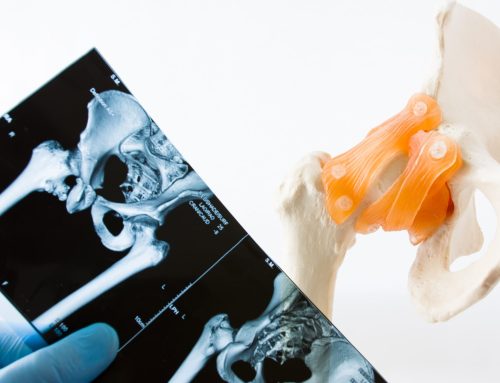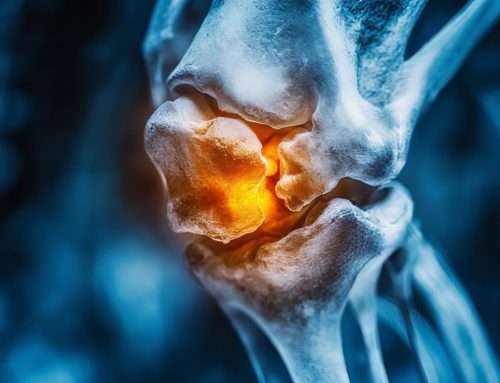Considering a hip or knee replacement? At Gateway Surgery, our approach pairs comprehensive evaluations with individualized care planning, so you have the insights and support needed to assess private surgery options in Canada.
If you’re exploring hip replacement or knee replacement and aren’t sure it’s the right choice, look for these six indicators and discover how timely intervention can help restore your mobility and comfort.

Table of Contents
6 Signs It Might Be Time for a Hip or Knee Replacement
Below are the six key indicators to help you determine if hip or knee replacement could be the right option. Click any item to jump directly to that section and learn how each sign informs your treatment decisions.
- Persistent pain that limits daily life.
- Stiffness and restricted movement.
- Diminished quality of life and activity avoidance.
- Limited benefit from conservative therapies.
- Imaging reveals joint breakdown.
- Gait abnormalities and alignment issues.
1. Persistent Pain That Limits Daily Life
When joint pain persists despite rest, medication, or typical therapies, it’s more than an occasional ache. You may notice:
- Pain at rest and at night. Waking up due to hip or knee discomfort is a strong indicator of advancing joint damage.
- Pain during routine activities. Difficulty rising from a chair or pain with climbing stairs, or with walking short distances may suggest cartilage breakdown.
- Dependence on pain relievers. If you find yourself taking NSAIDs or other analgesics daily, a surgical evaluation might help determine if next steps are needed to help with your pain.
During your consultation, your surgeon will use focused movement tests to pinpoint whether your discomfort comes from the joint itself or the surrounding muscles. If your joint pain remains stubborn despite trying other treatments, it may be time to explore replacement options.
2. Stiffness and Restricted Movement
Loss of flexibility can be as debilitating as pain. Common markers include:
- Limited range of motion. You’re unable to fully bend or straighten the joint, even after stretching or warm-up exercises.
- Morning stiffness. If you need a bit of time to “loosen up” after sleeping, cartilage wear may be the culprit.
- Locking or catching sensations. Mechanical symptoms (such as a knee that locks momentarily) often accompany advanced degeneration.
Our specialists quantify your range of motion, comparing it to healthy norms. When stiffness impedes essential tasks like tying shoes or getting in and out of a vehicle, it’s a clear red flag.
Everything You Need to Know About Hip Replacement
Get answers to your top questions on candidacy, procedure steps, and recovery timelines.
FAQs on Total Hip Replacement: Everything You Need to Know →
3. Diminished Quality of Life and Activity Avoidance
Chronic joint issues can steal your ability to enjoy favourite pursuits. Watch for:
- Activity withdrawal. You skip golf rounds, hikes, or family outings because movement triggers pain.
- Emotional toll. Frustration, low mood, or anxiety about worsening mobility can accompany chronic discomfort.
- Dependence on support. Relying on canes, walkers, or frequent assistance from others indicates functional decline.
Beyond symptom relief, joint replacement can rejuvenate your lifestyle. At Gateway Surgery, we focus on outcomes that matter to you, whether that’s returning to the pickleball court or walking without hesitation.
4. Limited Benefit from Conservative Therapies
A cornerstone of our care model is exploring non-operative options before surgery. These may include:
- Physiotherapy programs. Tailored exercises to strengthen surrounding muscles and improve joint stability.
- Injections. Corticosteroid or hyaluronic acid injections to reduce inflammation and lubricate the joint.
- Assistive devices. Bracing, orthotics, or walking aids to redistribute stress and improve function.
If you’ve completed a structured course of these treatments with only fleeting or minor relief, it suggests that the underlying joint degeneration has progressed beyond conservative management.
5. Imaging Reveals Joint Breakdown
Your X-rays tell the story of what’s happening inside your joint. We look for:
- Joint-space narrowing. A sign that the cartilage cushioning your bones has worn away.
- Bone spurs. Small bony growths that form as your joint adapts to stress.
- Subchondral changes. Areas of bone hardening or small cysts beneath the cartilage surface.
Together with your exam and history, these findings help your surgeon determine whether a joint replacement is the most effective path to lasting relief.
Experience Robotic Precision
See how Gateway’s robot-assisted knee replacements deliver enhanced accuracy and faster recovery. The Future of Knee Surgery: Gateway’s Robot-Assisted Knee Replacements →
6. Gait Abnormalities and Alignment Issues
Compensatory movement patterns often develop when one joint is compromised:
- Limping or favouring one side. Shifts stress to hips, knees, or the low back, risking secondary problems.
- Leg-length discrepancy. Joint collapse can shorten the affected limb, leading to pelvic tilt and back pain.
- Altered biomechanics. Improper loading accelerates wear in adjacent joints.
Our orthopaedic experts can perform gait analysis to detect these subtleties. Correcting alignment through replacement not only relieves pain but also protects your overall musculoskeletal health.
Taking Action: The Gateway Surgery Advantage
Recognizing these signs early empowers you to act before irreversible damage occurs. At Gateway Surgery, our private clinic delivers:
✓ Timely consultations.
Book your in-person or virtual evaluation with an orthopaedic surgeon within 1–2 weeks.
✓ Multidisciplinary expertise.
Orthopaedic surgeons collaborate with physiotherapists, primary care physicians, and other specialized care providers to deliver an exclusive Circle of Care.
✓ Comprehensive preparation.
From pre-operative bloodwork and ECGs to customized prehabilitation programs, we optimize your readiness for surgery.
✓ Nationwide access. Procedures are typically scheduled 4–6 weeks post-consultation at a variety of facility options across Canada.
Schedule Your Surgical Consultation with Gateway
If persistent hip or knee pain, stiffness, or activity limitations are limiting you, it may be time to explore joint replacement. Contact Gateway Surgery today to arrange your private consultation and discover how a hip or knee replacement can help you reclaim your lifestyle.




